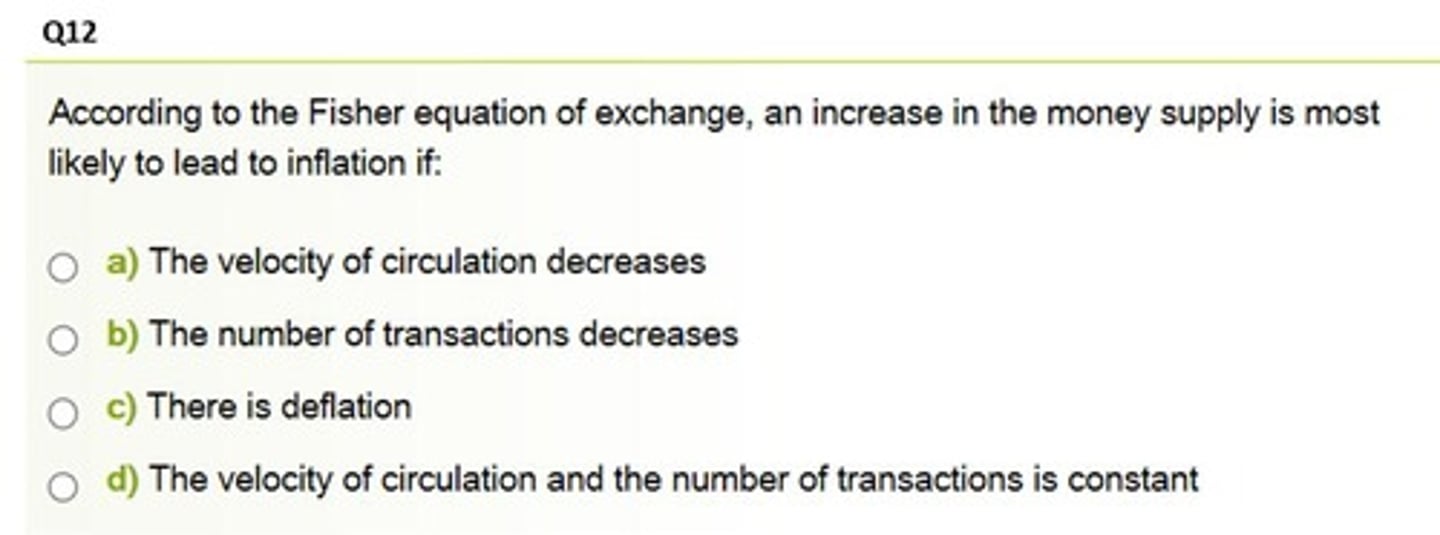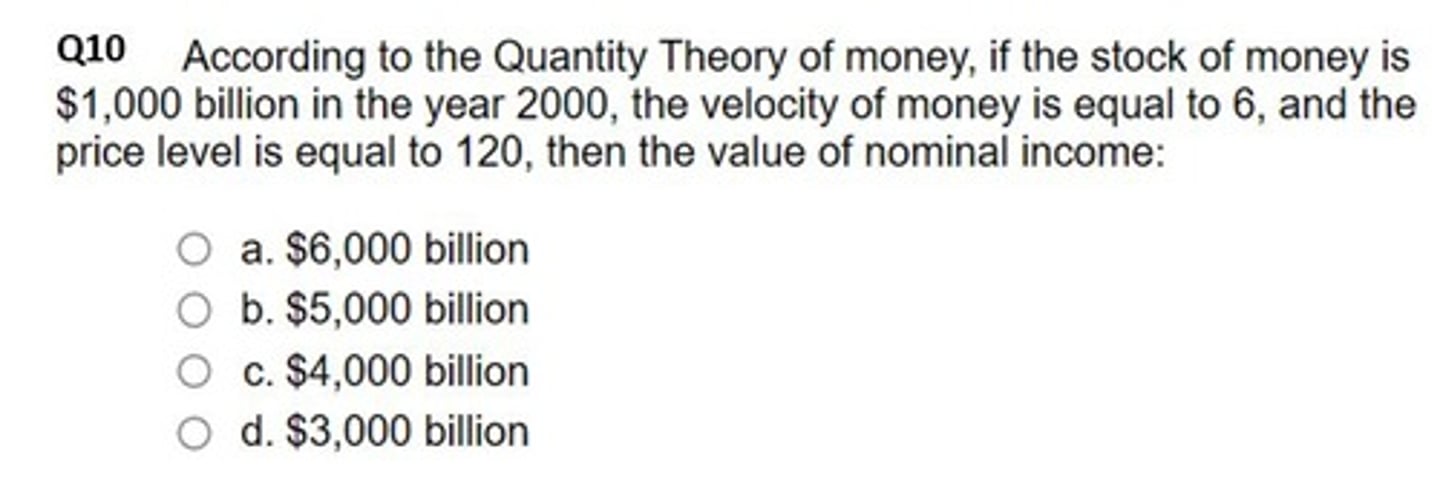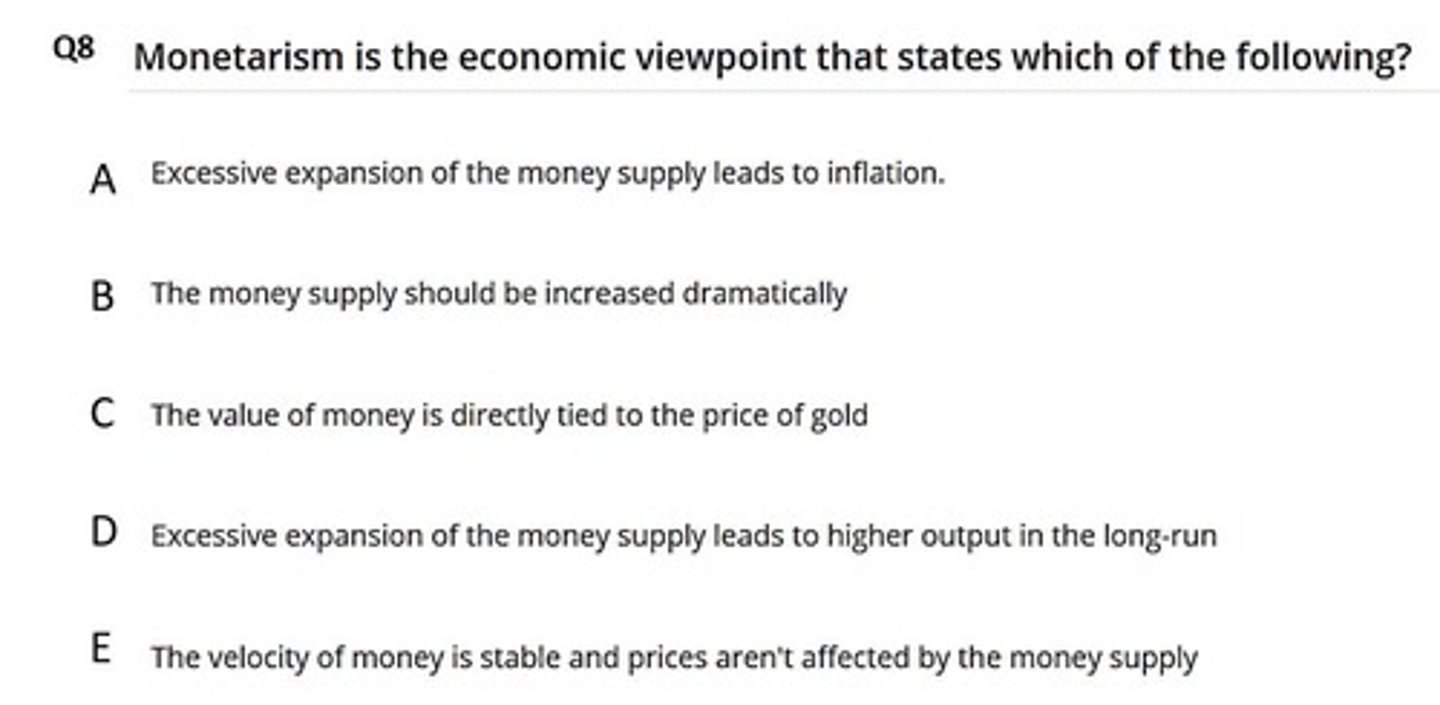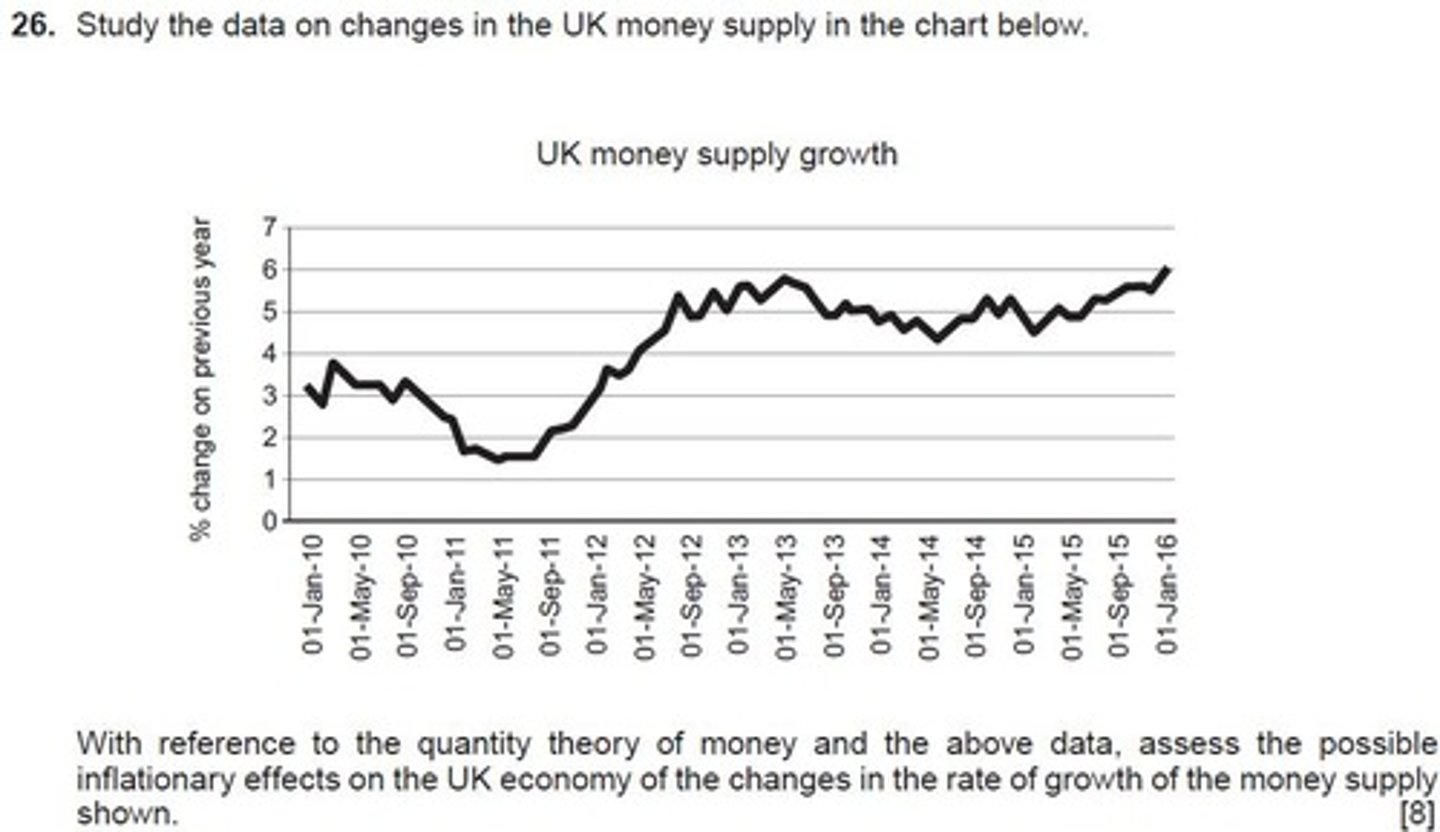Inflation and deflation (money supply)
1/27
There's no tags or description
Looks like no tags are added yet.
Name | Mastery | Learn | Test | Matching | Spaced |
|---|
No study sessions yet.
28 Terms
Money
Object accepted for goods, services, and debts.
Functions of Money
Roles include exchange, saving, accounting, and payment.
Money Supply
Total money available in the economy at a time.
Narrow Money (M0)
Physical money: notes and coins in circulation.
Broad Money (M4)
Includes M0 plus private sector bank deposits.
Quantity Theory of Money
Inflation linked to money supply increase.

Fisher Equation of Exchange
M x V = P x T; money transactions identity.

Velocity of Circulation (V)
Average times money changes hands in a period.

Average Price Level (P)
Mean price of goods/services in an economy.
Number of Transactions (T)
Total buying/selling events in a time frame.
Inflation
General increase in prices over time.
Deflation
General decrease in prices over time.
Monetarism
Economic theory emphasizing money supply control.

Milton Friedman
Economist asserting inflation is a monetary phenomenon.
Classical View
Focus on long-term economic growth and stability.
Keynesian View
Emphasizes demand-side factors for economic output.
Long-Run Aggregate Supply (LRAS)
Represents economy's maximum sustainable output.
Demand-Pull Inflation
Inflation caused by increased demand for goods.
Supply-Side Policies
Strategies to enhance production capacity and efficiency.
Economic Models
Simplified representations of economic processes.
Inflationary Expectations
Public's anticipation of future inflation rates.
Bank Weakness
Financial instability affecting money supply confidence.
Money Substitutes
Alternative payment methods like credit cards.
Venezuela Case Study
Example of extreme inflation linked to money supply.
Consumer Prices Index
Measure of average price changes over time.
Transaction Frequency
Rate at which transactions occur in an economy.
Economic Output (Y)
Total value of goods/services produced in an economy.
Percentage Change in Money Supply
Rate of increase or decrease in money supply.
